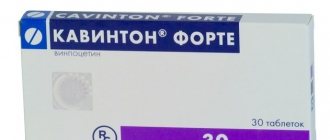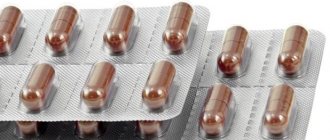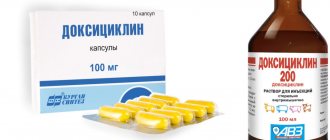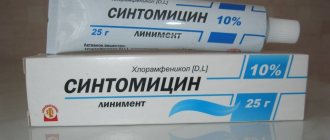pharmachologic effect
Losartan is a specific angiotensin II receptor antagonist (type AT1) for oral administration. Angiotensin II selectively binds to AT1 receptors found in many tissues (vascular smooth muscle, adrenal glands, kidneys and heart) and performs several important biological functions, including vasoconstriction and aldosterone release. Angiotensin II also stimulates the proliferation of smooth muscle cells. Losartan and its pharmacologically active metabolite (E 3 174) both in vitro and in vivo block all physiological effects of angiotensin II, regardless of the source or route of synthesis. Unlike some peptide angiotensin II antagonists, losartan does not have agonist effects. Losartan selectively binds to AT1 receptors and does not bind to or block receptors of other hormones and ion channels that play an important role in regulating the function of the cardiovascular system. In addition, losartan does not inhibit ACE, which is responsible for the destruction of bradykinin. Therefore, effects not directly related to the blockade of AT1 receptors, in particular, increased effects associated with the effects of bradykinin or the development of edema (losartan - 1.7%, placebo - 1.9%), are not related to the action of losartan. For long-term (6-week) treatment of patients with arterial hypertension with losartan at a dose of 100 mg/day. there was a 2-3-fold increase in the level of angiotensin II at the time the Cmax of the drug was reached in the blood plasma; In some patients, an even greater increase in losartan concentrations was observed, especially with a short duration of treatment (2 weeks). During treatment, antihypertensive activity and a decrease in plasma aldosterone concentrations appeared after 2 and 6 weeks of therapy, indicating effective blockade of angiotensin II receptors. However, after discontinuation of losartan, plasma renin activity and angiotensin II levels decreased after 3 days to the initial values observed before starting the drug. Since losartan is a specific antagonist of AT1 receptors of angiotensin II, it does not inhibit ACE, kinase II is an enzyme that inactivates bradykinin. A study comparing the effects of 20 mg and 100 mg losartan with the effects of an ACE inhibitor on the response to angiotensin I, angiotensin II and bradykinin showed that losartan blocked the effects of angiotensin I and angiotensin II without affecting the effects of bradykinin, due to the specific mechanism of action of losartan. In contrast, ACE inhibitors block the angiotensin I response and increase the response to bradykinin without affecting the response to angiotensin II, demonstrating a pharmacodynamic difference between losartan and ACE inhibitors. Plasma concentrations of losartan and its active metabolite, as well as the antihypertensive effect of losartan, increase with increasing dose of the drug. Because Losartan and its active metabolite are angiotensin II receptor antagonists, they both cause an antihypertensive effect. In a study with a single 100 mg dose of losartan in healthy male volunteers, administration of the drug to both patients on a low-salt diet and to patients on a high-salt diet did not affect glomerular filtration rate, effective renal plasma flow, or filtration fraction. Losartan has a natriuretic effect, which was more pronounced with a low-salt diet and did not appear to be associated with suppression of early sodium reabsorption in the proximal renal tubules. Losartan also caused a transient increase in renal excretion of uric acid. In patients with arterial hypertension, proteinuria (more than 2 g/24 hours), who do not have diabetes mellitus and taking losartan for 8 weeks at a dose of 50 mg to 100 mg, there was a significant decrease in proteinuria by 42%, fractional excretion of albumin and IgG. In these patients, losartan stabilized the glomerular filtration rate and reduced the filtration fraction. In postmenopausal women with arterial hypertension taking losartan potassium at a dose of 50 mg/day. for 4 weeks, there was no effect of therapy on renal and systemic prostaglandin levels. Losartan does not affect autonomic reflexes and does not have a long-term effect on plasma norepinephrine levels. In patients with arterial hypertension, losartan in doses up to 150 mg/day. does not cause clinically significant changes in the level of fasting triglycerides, total cholesterol (C) and HDL-C. At the same doses, losartan has no effect on fasting blood glucose levels. In general, losartan caused a decrease in serum uric acid levels (usually less than 0.4 mg/dL) that was maintained during long-term therapy. In controlled clinical studies that included patients with arterial hypertension, there were no cases of drug withdrawal due to an increase in serum creatinine or potassium levels.
Video on the topic
About the pharmacological characteristics and use of Losartan in the video:
Losartan can be considered a typical representative of medications that specifically act to reduce blood pressure. It is worth remembering that Losartan has a large number of side effects and a number of contraindications that should be discussed with a specialist.
The drug has a large number of analogues, but in its price category it is quite difficult to find a better tablet. His reviews are contradictory, it all depends on the general characteristics of the body.
The information on the MyMedNews.ru website is for reference and general information, collected from publicly available sources and cannot serve as a basis for making a decision on the use of medications in the course of treatment.
MyMedNews.ru
And we also have
Klacid or Sumamed - which is better?
Pharmacokinetics
Suction
When taken orally, losartan is well absorbed from the gastrointestinal tract and undergoes a “first pass” effect through the liver, resulting in the formation of an active carboxylated metabolite and inactive metabolites. The systemic bioavailability of losartan is approximately 33%. The average Cmax of losartan and its active metabolite is reached after 1 hour and after 3-4 hours, respectively. When losartan was taken with a normal meal, there was no clinically significant effect on the plasma concentration profile of losartan.
Distribution
Losartan and its active metabolite are more than 99% bound to plasma proteins (mainly albumin). Vd of losartan is 34 l. Studies in rats have shown that losartan practically does not penetrate the BBB.
Metabolism
Approximately 14% of the dose of losartan (when administered orally and intravenously) is converted into its active metabolite. After oral or intravenous administration of 14C-labeled losartan, the radioactivity of circulating blood plasma is primarily associated with the presence of losartan and its active metabolite. Biologically inactive metabolites are also formed, incl. two major ones, resulting from hydroxylation of the butyl side chain, and one minor one, N-2-tetrazole glucuronide.
Removal
Plasma clearance of losartan and its active metabolite is about 600 ml/min and 50 ml/min, respectively. The renal clearance of losartan and its active metabolite is approximately 74 ml/min and 26 ml/min, respectively. When losartan is taken orally, about 4% of the dose is excreted unchanged in the urine and about 6% of the dose is excreted in the urine as an active metabolite. Losartan and its active metabolite have linear pharmacokinetics when administered orally with losartan potassium in doses up to 200 mg. After oral administration, plasma concentrations of losartan and its active metabolite decrease polyexponentially with a final T1/2 of approximately 2 and 6-9 hours, respectively. When taking the drug at a dose of 100 mg 1 time / day. There is no significant accumulation in the blood plasma of either losartan or its active metabolite. Losartan and its metabolites are excreted in bile and urine. After oral administration of 14C-labeled losartan, about 35% of the radioactive label is found in the urine and 58% in the feces. After intravenous administration of losartan labeled with 14C, approximately 43% of the radioactive label is detected in the urine and 50% in the feces.
Pharmacokinetics in special groups of patients
Concentrations of losartan and its active metabolite in blood plasma in elderly patients with arterial hypertension do not differ significantly from these indicators in younger patients with arterial hypertension. Plasma concentrations of losartan were 2 times higher in women with hypertension compared with men with hypertension. Concentrations of the active metabolite did not differ between men and women. This apparent pharmacokinetic difference is not clinically significant. When losartan was taken orally in patients with mild to moderate alcoholic liver cirrhosis, the concentrations of losartan and its active metabolite in the blood plasma were 5 and 1.7 times (respectively) higher than in young healthy male volunteers. Plasma concentrations of losartan in patients with creatinine clearance above 10 ml/min did not differ from those in subjects with normal renal function. When compared, the AUC value in patients on hemodialysis was approximately 2 times greater than in patients with normal renal function. Plasma concentrations of the active metabolite do not change in patients with impaired renal function or in patients on hemodialysis. Losartan and its active metabolite cannot be removed by hemodialysis.
Mechanism of action of the drug
Losartan has a typical mechanism of action inherent in AT1 receptor antagonists. The active ingredients of this group lower blood pressure by acting on the endogenous substance that increases blood pressure in the body, angiotensin II.
The effect of angiotensin II is manifested by binding to the so-called AT1 receptors in the blood vessels and kidneys:
- On blood vessels, angiotensin II causes severe constriction;
- In the kidneys, angiotensin II causes the release of aldosterone, a hormone that promotes the retention of water and salts in the body.
Indications
- arterial hypertension; - reduction in the risk of associated cardiovascular morbidity and mortality in patients with arterial hypertension and left ventricular hypertrophy, manifested by a combined reduction in the incidence of cardiovascular mortality, the incidence of stroke and myocardial infarction; - protection of the kidneys in patients with type 2 diabetes mellitus with proteinuria - slowing the progression of renal failure, manifested by a decrease in the incidence of hypercreatininemia, the incidence of end-stage chronic renal failure requiring hemodialysis or kidney transplantation, mortality rates, as well as a decrease in proteinuria; - chronic heart failure with ineffective treatment with ACE inhibitors.
Contraindications to the use of losartan
Losartan should not be used in patients with known hypersensitivity to any AT-1 antagonists. However, losartan should only be used with strict consideration of medical risks and regular examinations in the following cases:
- For nephropathy, unilateral or bilateral chronic occlusion of the renal arteries and after organ transplantation;
- In patients with diabetes or in patients with impaired nephron function who are receiving the antihypertensive drug aliskiren;
- In primary hyperaldosteronism due to the possible ineffectiveness of losartan;
- With significant stenosis of the heart valves (aortic or mitral), cardiac hypertrophy, narrowing of the coronary arteries (CHD) and after a hemorrhagic stroke.
Losartan should not be prescribed by a doctor with diuretics that contain large amounts of potassium. This can cause hyperkalemia in the blood and lead to fatal cardiac arrhythmias or cardiac arrest.
Due to the diuretic effect of losartan, the physician must compensate for the lack of sodium and/or total circulating blood volume before starting therapy. In some cases, a reduction in the dosage of the drug is required.
Sodium
Pregnancy and lactation
Losartan should not be used during any trimester of pregnancy and lactation.
The drug, especially before the sixth month of pregnancy, can lead to kidney failure in the fetus or newborn, lack of a normal skull, and even death for the baby.
If pregnancy is suspected or planned, the doctor should stop using losartan as soon as possible.
Losartan passes into breast milk in rats. Whether this is the case with people is still unknown. Therefore, you should not breastfeed while taking this drug. If the doctor believes that therapy is inevitable, the baby urgently needs to change the way he eats.
Children
Losartan should not be given to children and adolescents. There is still no sufficient experience with drug treatment in this age group. A number of studies have indicated possible delays in bone development in children and fatal cardiac arrhythmias.
Dosage regimen
Losartan is taken orally, regardless of food intake, and can be used either as monotherapy or in combination with other antihypertensive drugs. For arterial hypertension, the standard initial and maintenance dose for most patients is 50 mg 1 time / day. The maximum hypotensive effect is achieved 3-6 weeks after the start of therapy. In some patients, to achieve greater effect, the dose can be increased to 100 mg 1 time / day. In patients with reduced blood volume (for example, when taking diuretics in high doses), the initial dose of the drug should be reduced to 25 mg 1 time / day. There is no need to select the initial dose in the elderly and in patients with renal failure, including patients on dialysis. In patients with a history of liver disease, it is recommended to prescribe the drug in lower doses. To reduce the risk of associated cardiovascular morbidity and mortality in patients with arterial hypertension and left ventricular hypertrophy, the standard initial dose of the drug is 50 mg 1 time / day. In the future, it is recommended to add hydrochlorothiazide in low doses or increase the dose of losartan to 100 mg 1 time / day. taking into account the degree of blood pressure reduction. To protect kidney function in patients with type 2 diabetes mellitus and proteinuria, the standard initial dose of the drug is 50 mg 1 time / day. In the future, it is recommended to increase the dose of losartan to 100 mg 1 time / day. taking into account the degree of blood pressure reduction. Losartan can be prescribed together with other antihypertensive drugs (diuretics, calcium channel blockers, alpha and beta blockers, centrally acting drugs), insulin and other hypoglycemic agents (sulfonylurea derivatives, glitazones and glucosidase inhibitors). For chronic heart failure, the initial dose of losartan is 12.5 mg 1 time / Typically, the dose is titrated at weekly intervals (i.e. 12.5 mg / day, 25 mg / day, 50 mg / day) to the usual maintenance dose 50 mg 1 time/day. depending on individual tolerance.
Losartan instructions for use
Losartan is a pharmaceutical drug used to lower blood pressure (BP).
Active substance
This drug with the active substance of the same name belongs to the sartan group. Losartan is a biphenyl tetrazole derivative.
Chemical formula: C22H23ClN6O. Name: 2-Butyl-4-chloro-1-[[2′-(1H-tetrazol-5-yl)[1,1′-biphenyl]-4-yl]-methyl]-1H-imidazol-5-methanol .
In this drug, Losartan is represented by a potassium salt.
According to its physical properties, it is a white or whitish crystalline powder, highly soluble in water and ethyl alcohol, and poorly soluble in organic solvents.
Mechanism of action
The action of Losartan, like other sartans, is associated with the ability to influence the RAAS - the renin-angiotensin-aldosterone system. The end product of the reactions occurring in this system is angiotensin II. This protein compound is the end product of complex biochemical reactions.
In a simplified form, these reactions can be represented as follows. The liver synthesizes the protein angiotensinogen. Under the influence of another protein, renin, produced by the kidneys, angiotensinogen is converted into angiotensin I, which is physiologically inactive.
Next, angiotensin I, with the participation of angiotensin-converting enzyme (ACE), is activated into angiotensin II. It is through this compound that the RAAS exerts its effect on the body of mammals and humans. Under the influence of angiotensin II, small muscular arteries (arterioles) spasm, which leads to an increase in total peripheral resistance (TPR) of blood vessels and an increase in blood pressure.
Maintaining blood pressure at a stable level is vital. But its excessive growth (arterial hypertension) is a negative point, leading to the development of hypertension and cardiac pathology.
In addition, the RAAS activates the sympathetic nervous system. This system, through catecholamine mediators, adrenaline and norepinephrine, spasms blood vessels, and thereby aggravates hypertension. Angiotensin II stimulates the synthesis of aldosterone by the adrenal cortex and vasopressin by the neurohypophysis (posterior pituitary gland).
The action of these hormones is aimed at retaining sodium and water in the body. This phenomenon additionally stimulates an increase in blood pressure and is manifested by water and sodium retention in the body, a decrease in urination (diuresis) and an increase in circulating blood volume.
The negative effect of angiotensin II on blood vessels is also expressed in the fact that it stimulates the synthesis of low-density cholesterol (low-density lipoproteins), and thereby contributes to the formation of atherosclerotic plaques on the endothelium (inner wall) of blood vessels.
Under the influence of this substance, foci of proliferation of fibrous tissue are formed in the heart muscle. Structurally, this process is manifested by thickening (hypertrophy) of the myocardium, cardiosclerosis, and, as a consequence, arrhythmias due to disturbances in the conduction system of the heart.
Hardening of the kidneys (nephrosclerosis) in arterial hypertension is caused by spasm of the renal arteries. The name of this pathological condition is primary wrinkled kidney. This is a frequent companion to hypertension. Manifested by renal disorders (nephropathy) and progressive renal failure.
Nephropathy is a typical complication of diabetes mellitus. The problem is that angiotensin II also negatively affects carbohydrate metabolism. Under its action, the tolerance of fat cells to insulin increases, which leads to type II diabetes mellitus. Angiotensin II also slows down the excretion of uric acid salts by the kidneys, and this can lead to gout.
Angiotensin II exerts its effect by acting on receptors located in the corresponding tissues: in the vascular endothelium, in the myocardium, in the adrenal glands and in the kidneys, in adipose tissue. These receptors are heterogeneous. Therefore, there are several types of angiotensin (AT) receptors.
The negative effect is realized through AT-1 receptors. Stimulation of AT-2 receptors causes opposite effects: dilation (vasodilation) of blood vessels and inhibition of sclerotic processes in the heart and kidneys. The functions of the other AT-3 and AT-4 receptors are not fully understood.
Losartan selectively blocks AT-1 receptors. In this case, vasodilation, a decrease in blood pressure, and improved blood circulation in the myocardium, kidneys, and brain are noted. Cell tolerance to insulin increases, and the effectiveness of insulin in lowering blood sugar increases.
Intravascular atherosclerotic processes slow down. Clinically, this is manifested by stabilization of blood pressure and improved tolerance to physical activity. The frequency of angina attacks in coronary heart disease is reduced. Likewise, the risk of developing myocardial infarction is reduced.
Losartan does not block AT-2 receptors, but, on the contrary, indirectly stimulates them. The bottom line is that when the renal arteries dilate, the kidneys begin to compensatoryly synthesize renin.
This ultimately leads to an increase in the amount of angiotensin II. Not finding the point of application due to the blockade of AT-1 receptors, it begins to intensely act on AT-2 receptors, thereby causing the corresponding effects: vasodilation and improvement of metabolic processes in tissues.
Losartan competitively binds to AT-1 receptors. This means that when the level of angiotensin II increases, it binds to receptors, displacing it.
However, in the liver it is transformed to form the metabolite EXP-3174. In its activity, this metabolite is tens of times greater than the original substance, and non-competitively, i.e., irreversibly, binds to AT-1 receptors. The value of the drug also lies in the fact that neither it nor its metabolites accumulate in the body. This medicine is not addictive.
History of creation
Work on the synthesis of Losartan began back in 1980. Initially, this drug was codenamed S-8307. A little later, in 1986, the final version of the drug was obtained, which was 10,000 times more active than the original S-8307. In 1995
Losartan has been officially recommended by the US Food and Drug Administration for the treatment of cardiovascular diseases. This was the second of the sartans synthesized.
Although in essence it can be considered the first, because its predecessor, Saralazin, was never used in clinical practice due to its side effects. Sartans, selective AT-2 receptor antagonists, can be considered the “youngest” drug group.
Their effectiveness lies in the fact that they block the very last, final link of the RAAS. This is where sartans compare favorably with another group - ACE inhibitors.
The bottom line is that in addition to ACE, other enzyme compounds that are not affected by ACE inhibitors also participate in the synthesis of angiotensin II. And sartans, by blocking receptors, prevent the effect of angiotensin II on tissue, regardless of the route of its synthesis.
Currently, these drugs are included in most drug regimens for the treatment of arterial hypertension and cardiac pathology. It is actively used in the USA, Western countries. Europe, Russia and many post-Soviet countries.
Interesting Facts
In the first years of use, revenue from sales of Losartan worldwide amounted to $200 million. In 2005, the same amount exceeded the $3 billion mark.
Synthesis technology
The production technology of the drug involves the production of potassium salt nanocapsules enclosed in a xanthan gum shell. To do this, Losartan potassium is added to a suspension of gum in benzene in the presence of the enzymatic preparation E472C. The resulting mixture is stirred at a speed of 1000/sec. Hexane is then added, filtered and dried.
Release forms
Tablets 50 and 100 mg
Losartan is produced under generic names by many foreign (Lek, Sandoz, Teva, Richter) and domestic companies. Therefore, in the pharmaceutical market, in addition to Russian ones, you can find foreign (mainly Polish and Hungarian) analogues.
Among doctors and patients, the drug is better known under the trade name Cozaar, produced by Merck Sharp Dome in England. In Russia and the CIS countries, the generic Lorista, which is produced by the Russian branches of the KRKA company, is widespread.
Among other generics:
- Bloktran – Pharmstandard, Russia;
- Vasotens – Actavis, Iceland;
- Lozal – Zentiva, Slovakia;
- Losarel – Lek, Slovenia, Lek;
- Presartan - Ipka, India.
All these medications are tablets. The weight of the tablets is 50 and 100 mg. Bloktran can have a mass of 12.5 mg. The quality of generics, both Russian and foreign, is good.
But Russian drugs are cheaper. Abroad, the drug may be called Losanorm, Losarbon, Losium, Lostad, Sartkasal, and many others. Along with Losartan, biphenyl tetrazole derivatives are used, in which the active substances are: Candesartan, Valsartan, Tazosartan, Ibesartan.
Indications
- Arterial hypertension;
- Chronic heart failure;
- Diabetic nephropathy.
Dosages
The tablets are taken once in a daily dose. This dose is 50 mg in most cases. With a weak hypotensive effect, the daily dose can be increased to 100 mg as a single dose. The use of tablets does not depend on food intake.
The drug is taken over a long course, because the maximum hypotensive effect is achieved after 3-6 weeks of continuous use. Losartan can be combined with other antihypertensive drugs. In case of combination with diuretics, it is recommended to reduce the initial daily dose to 25 mg.
For chronic heart failure, it is recommended to start taking it with a minimum dose of 12.5 mg, increasing it to 25 and 50 mg over each subsequent week. Patients suffering from liver failure, as well as persons over 75 years of age, are recommended to take the drug at a daily dose of 25 mg.
Pharmacodynamics
The drug is absorbed into the gastrointestinal tract. Systemic bioavailability is 33%. In the liver, Losartan undergoes metabolic transformations, during which the active metabolite EXP-3174 and several other inactive metabolites are formed. Moreover, EXP-3174 accounts for about 14% of Losartan taken orally. The maximum concentration is formed 1 hour after its administration.
For the active metabolite, this figure is 3-4 hours. In patients suffering from liver cirrhosis, the concentrations of the drug and its metabolites may be several times higher than those in healthy individuals. About 99% of Losartan and EXP-3174 are bound to plasma proteins.
The drug is excreted through the kidneys and intestines. Moreover, 6% of the drug taken orally is excreted through the kidneys in the form of an active metabolite, and 4% is excreted unchanged. The half-life of Losartan is 2 hours, and EXP-3174 is 6-9 hours.
Side effects
- Cardiovascular system: dose-dependent hypotension, bradycardia, arrhythmias, nosebleeds, increased frequency of angina attacks;
- Gastrointestinal tract: anorexia, dry mouth, nausea, vomiting, constipation, flatulence, exacerbation of gastritis, hepatitis, increased liver enzymes in the blood plasma, jaundice;
- Central nervous system: general weakness, sleep disturbances, fainting, migraine, memory disorders, tremors of the extremities, peripheral sensitivity disorders such as paresthesia;
- Urinary system: impaired renal function, rarely – imperative urge to urinate;
- Musculoskeletal system: arthralgia and myalgia;
- Skin and mucous membranes: urticaria, itching, angioedema, erythema, increased sweating, photosensitivity, alopecia;
- Blood: anemia, eosinophilia, thrombocytopenic purpura, hyperkalemia;
- Sense organs: conjunctivitis, vision, taste disturbances, sensation of ringing in the ears;
- Reproductive system: decreased libido, impotence.
These side effects are rare, and many patients tolerate Losartan well.
Contraindications
- Individual intolerance to Losartan;
- Severe liver failure;
- Dehydration;
- Hypotension;
- Age up to 18 years.
Prescribed with caution for renal failure, renal artery stenosis, hyperkalemia, as well as mitral and aortic stenosis.
Interaction with other drugs
- Potassium-sparing diuretics, potassium supplements – worsening hyperkalemia;
- Rifampicin and Fluconazole - reduce the content of the active metabolite in the blood;
- Lithium preparations – increased toxicity;
- NSAIDs – weakening of the hypotensive effect of Losartan, reversible deterioration of renal function;
- Other antihypertensive drugs, neuroleptics, tricyclic antidepressants, Amifostine, Baclofen - increased hypotensive effect;
- Aleskiren (renin inhibitor) – hypotension, hyperkalemia, deterioration of renal function.
Pregnancy and lactation
There is no data on the negative effects of Losartan on the fetus. However, it has been established that all drugs that affect the RAAS are potentially dangerous in terms of fetal death, especially in the later stages of pregnancy - in the II-III trimesters. Therefore, during pregnancy, use is extremely undesirable. Lactation is also a contraindication to taking Losartan. Otherwise, breastfeeding should be stopped.
Storage
Store at a temperature not exceeding 300C. Shelf life – 2 years. The drug is available with a doctor's prescription.
Side effect
In controlled clinical trials of the drug in patients with essential arterial hypertension, the only drug-related side effect was dizziness, which was observed more often than with placebo and occurred in ≥1% of patients receiving losartan. In addition, dose-dependent orthostatic reactions were observed in ≤ 1% of patients. Rash was rarely reported, but the incidence was less than with placebo. Controlled clinical studies have shown that losartan is generally well tolerated in patients with left ventricular hypertrophy, patients with type 2 diabetes mellitus and proteinuria. The most common side effects associated with the drug were systemic and non-systemic dizziness, asthenia/weakness, decreased blood pressure and hyperkalemia. In these studies, the following side effects with losartan (n=2,085) and placebo (n=535) occurred in ≥ 1% of patients: Body as a whole: gastric pain 1.7% (placebo 1.7 %); weakness and fatigue 3.8% (placebo 3.9%), chest pain 1.1% (placebo 2.6%), edema 1.7% (placebo 1.9%) From the cardiovascular system: increased frequency palpitations 1% (placebo 0.4%); tachycardia 1% (placebo 1.7%). From the digestive system: diarrhea 1.9% (placebo 1.9%); dyspepsia 1.1% (placebo 1.5%); nausea 1.8% (placebo 2.8%). From the musculoskeletal system: back pain 1.6% (placebo 1.1%); muscle cramps 1% (placebo 1.1%). From the central nervous system: dizziness 4.1% (placebo 2.4%); headache 14.1% (placebo 17.2%); insomnia 1.1% (placebo 0.7%). From the respiratory system: cough 3.1 (placebo 2.6%); swelling of the nasal mucosa 1.3% (placebo 1.1%); pharyngitis 1.5% (placebo 2.6%); sinusitis 1% (placebo 1.3%); upper respiratory tract infections 6.5% (placebo 5.6%). The following adverse reactions have been reported in widespread clinical practice. Allergic reactions: Angioedema, including swelling of the larynx, glottis causing airway obstruction, and/or swelling of the face, lips, pharynx and/or tongue, has rarely been observed in patients taking losartan. Some of these patients had a history of angioedema while taking ACE inhibitors. Vasculitis, including Henoch-Schönlein purpura, has been reported rarely. From the digestive system: hepatitis (rarely), liver dysfunction. From the hematopoietic system: anemia, thrombocytopenia. From the musculoskeletal system: myalgia; arthralgia; rarely - rhabdomyolysis. From the side of the central nervous system: migraine, rarely - dysgeusia. From the respiratory system: cough. Dermatological reactions: urticaria, itching, skin hyperemia. From the laboratory parameters: in controlled clinical studies in patients with essential arterial hypertension, clinically significant changes in standard laboratory parameters were rarely associated with taking losartan. Hyperkalemia (serum potassium >5.5 mEq/L) was observed in 1.5% of patients. In a study of type 2 diabetic patients with proteinuria, hyperkalemia developed in 9.9% of patients treated with losartan and in 3.4% of patients treated with placebo. Elevated ALT levels have been observed in rare cases and usually return to normal after discontinuation of therapy. In general, losartan is well tolerated; side effects are mild and transient and do not require discontinuation of the drug. The overall incidence of side effects with losartan is comparable to that observed with placebo.
Side effects
Undesirable effects of the drug are presented in the table:
| System | Effect |
| Heart | Chest pain |
| Heartbeat | |
| Heart rate acceleration | |
| CNS | Dizziness |
| Drowsiness | |
| Insomnia | |
| Headache | |
| Convulsions | |
| Vessels | Arterial hypotension |
| Collapse | |
| Gastrointestinal tract | Dyspepsia |
| Constipation | |
| Airways | Rhinitis |
| Dry cough | |
| General | Exhaustion |
| Edema | |
| Increased fatigue | |
| Allergic reactions | |
| Increased concentrations of potassium and liver transaminases |
In men, during therapy with sartans, potency decreases.
Contraindications
- pregnancy; - hypersensitivity to the components of the drug. The drug should be prescribed with caution to patients with reduced blood volume, for example, those receiving treatment with diuretics in high doses (symptomatic hypotension may occur), as well as patients with a history of liver and kidney diseases. The use of losartan during pregnancy is contraindicated. The use of drugs acting on the renin-angiotensin system in the second and third trimesters of pregnancy can cause serious damage or even death to the developing fetus, therefore, when pregnancy is established, taking losartan should be stopped immediately. In the fetus, renal perfusion, dependent on the development of the renin-angiotensin system, appears in the second trimester; the risk to the fetus increases if losartan is prescribed in the second or third trimester of pregnancy. It is not recommended to take losartan during lactation. There is no experience with the use of losartan during breastfeeding, and it is unknown whether losartan is excreted in breast milk. Because Many drugs are excreted in breast milk and may have adverse effects on infants; taking into account the need for the mother to take the drug, a decision should be made to stop breastfeeding or discontinue the drug.
Analogues of the drug
Domestic generics are not inferior in quality to foreign ones. Manufacturers of the drug on the Russian market - Vertex, Teva - offer substitutes at more affordable prices. If losartan is intolerant, replacement of medications with other biphenyl tetrazole derivatives or ACE inhibitors is indicated. Drugs whose pharmacological effects are similar to those of Losartan include pharmaceutical drugs such as:
- "Lorista";
- "Angizar";
- "Hyperzar";
- "Xartan";
- "Lozap";
- "Pulsar";
- "Kandekor";
- "Hizart."
The combination drug with a diuretic can be replaced with Co-Sentor.
Substitute for losartan tablets with hypothiazide:
- "Angisar Plus";
- "Co-Centor";
- "Sartokad-N";
- "Gizaar Forte";
- "Firmasta".
special instructions
A symptom of hypersensitivity such as angioedema may occur. In patients with reduced blood volume (for example, those receiving treatment with large doses of diuretics), symptomatic arterial hypotension may occur. Correction of such conditions must be carried out before prescribing losartan or starting treatment with a lower dose. Violation of water and electrolyte balance is typical for patients with renal failure with or without diabetes mellitus, therefore, when prescribing the drug to this category of patients, special care should be taken. In clinical studies involving patients with type 2 diabetes mellitus with proteinuria, the incidence of hyperkalemia was higher in the losartan group than in the placebo group. Several patients had to discontinue therapy due to hyperkalemia. During treatment with losartan, patients should not take potassium supplements or potassium-containing salt substitutes without prior consultation with their doctor. Data from pharmacokinetic studies indicate that the concentration of losartan in the blood plasma of patients with cirrhosis of the liver increases significantly, so patients with a history of liver disease should be prescribed the drug at a lower dose. Due to inhibition of the renin-angiotensin system, changes in renal function, including renal failure, have been observed in some susceptible patients; these changes may disappear after cessation of therapy. Some drugs that affect the renin-angiotensin system may increase blood urea and serum creatinine levels in patients with bilateral renal artery stenosis or solitary renal artery stenosis. Similar effects have been reported with losartan; changes in renal function may disappear when therapy is stopped. In patients with renal function dependent on the activity of the renin-angiotensin-aldosterone system (i.e. with severe chronic heart failure), treatment with ACE inhibitors in some cases was accompanied by the development of oliguria and/or increasing azotemia, and acute renal failure (rarely), and/ or fatal conditions. Similar outcomes have been reported when treating this category of patients with losartan. Clinical studies have not revealed any differences regarding the safety and effectiveness of losartan in elderly patients.
Use in pediatrics
The safety and effectiveness of the drug in children under 18 years of age have not been established.
Use for liver dysfunction
The drug should be prescribed with caution to patients with a history of liver disease.
Use for renal impairment
The drug should be prescribed with caution to patients with a history of kidney disease.
Analogs
Losartan is one of the typical representatives of drugs aimed at combating high blood pressure. That is why it has many analogues.
Among the analogues of Losartan:
- Losartan Teva;
- Losartan Richter;
- Losartan Hydrochlorothiazide;
- Angizar;
- Brozaar;
- Hyperzar;
- Cardomine;
- Closart;
- Kozaar;
- Xartan;
- Lozap;
- Lorista;
- Losacar;
- Lothar;
- Presartan;
- Pulsar.
Drug interactions
There were no clinically significant drug interactions with drugs such as hydrochlorothiazide, digoxin, warfarin, cimetidine, phenobarbital, ketoconazole and erythromycin. Rifampin and fluconazole reduce the level of the active metabolite. The clinical significance of these interactions has not been studied. As with other agents that block the formation of angiotensin II and its effects, concomitant administration of potassium-sparing diuretics (spironolactone, triamterene, amiloride), potassium supplements and potassium-containing salts may lead to an increase in serum potassium levels. As with the use of other drugs that affect sodium excretion, treatment with losartan may be accompanied by a decrease in excretion and an increase in the serum concentration of lithium, therefore, during simultaneous treatment with lithium preparations, its serum concentration should be monitored. NSAIDs, including selective COX-2 inhibitors, may reduce the effect of diuretics and other antihypertensive drugs. Therefore, the hypotensive effect of angiotensin II receptor antagonists may be weakened by concomitant use of NSAIDs, including selective COX-2 inhibitors. In some patients with impaired renal function who have been treated with NSAIDs, including selective COX-2 inhibitors, co-administration of angiotensin II receptor antagonists may cause a further deterioration of renal function. Usually this effect is reversible. Fluconazole, an inhibitor of cytochrome P450 isoenzyme 2C9, reduces plasma concentrations of the active metabolite and increases concentrations of losartan, however, the pharmacodynamic significance of this phenomenon has not been established. It has been shown that individuals who do not metabolize losartan into the active metabolite have a very rare and specific defect in the 2C9 isoenzyme of cytochrome P450.
Interaction
When used simultaneously with diuretics in high doses, arterial hypotension is possible.
When used simultaneously with potassium preparations and potassium-sparing diuretics, the risk of developing hyperkalemia increases.
When used simultaneously with non-steroidal anti-inflammatory drugs (for example, indomethacin), including selective cyclooxygenase-2 inhibitors, the effectiveness of losartan may be reduced.
When used simultaneously with orlistat, the antihypertensive effect of losartan decreases, which can lead to a significant increase in blood pressure and the development of a hypertensive crisis.
When used simultaneously with rifampicin and fluconazole, the clearance of losartan increases and its effectiveness decreases.
There is a report of the development of lithium intoxication when used simultaneously with lithium carbonate.
Dispensed from pharmacies by doctor's prescription.











